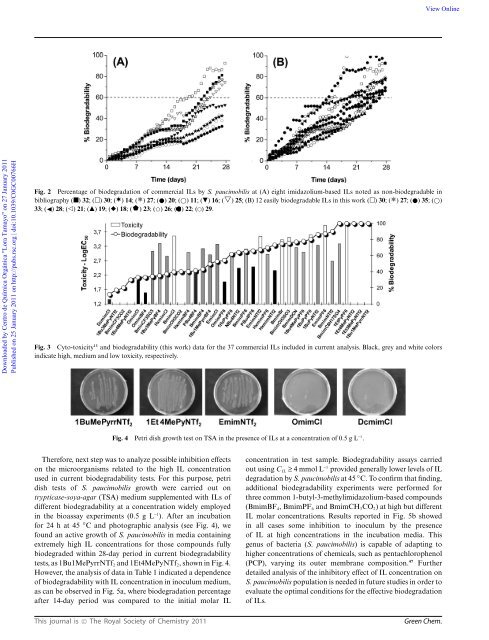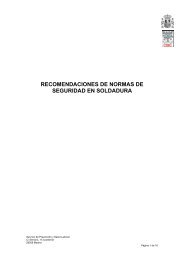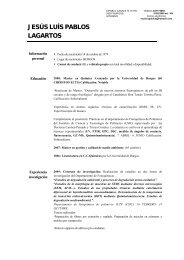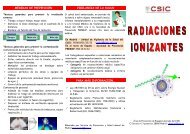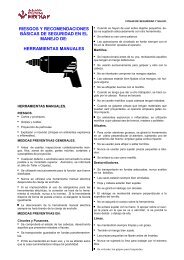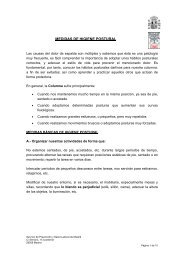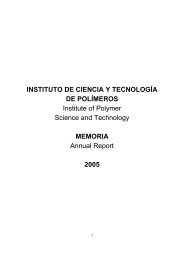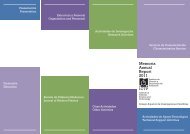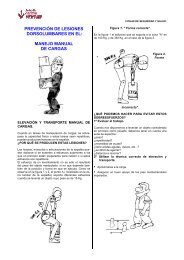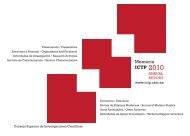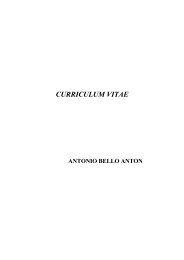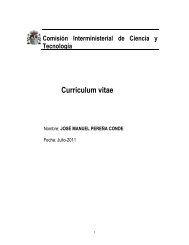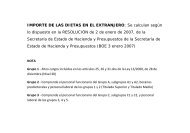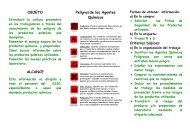Green Chemistry PAPER - ictp
Green Chemistry PAPER - ictp
Green Chemistry PAPER - ictp
- No tags were found...
You also want an ePaper? Increase the reach of your titles
YUMPU automatically turns print PDFs into web optimized ePapers that Google loves.
View OnlineDownloaded by Centro de Química Orgánica "Lora Tamayo" on 27 January 2011Published on 25 January 2011 on http://pubs.rsc.org | doi:10.1039/C0GC00766HFig. 2 Percentage of biodegradation of commercial ILs by S. paucimobilis at (A) eight imidazolium-based ILs noted as non-biodegradable inbibliography () 32;(□) 30;( ) 14;( ) 27;() 20;() 11;() 16;(▽) 25; (B) 12 easily biodegradable ILs in this work (□) 30;( ) 27;() 35;()33;(◭) 28;() 21;() 19;() 18;() 23;(⬠) 26;( ) 22;(⬡) 29.Fig. 3 Cyto-toxicity 13 and biodegradability (this work) data for the 37 commercial ILs included in current analysis. Black, grey and white colorsindicate high, medium and low toxicity, respectively.Fig. 4 Petri dish growth test on TSA in the presence of ILs at a concentration of 0.5 g L -1 .Therefore, next step was to analyze possible inhibition effectson the microorganisms related to the high IL concentrationused in current biodegradability tests. For this purpose, petridish tests of S. paucimobilis growth were carried out ontrypticase-soya-agar (TSA) medium supplemented with ILs ofdifferent biodegradability at a concentration widely employedin the bioassay experiments (0.5 g L -1 ). After an incubationfor 24 h at 45 ◦ C and photographic analysis (see Fig. 4), wefound an active growth of S. paucimobilis in media containingextremely high IL concentrations for those compounds fullybiodegraded within 28-day period in current biodegradabilitytests, as 1Bu1MePyrrNTf 2 and 1Et4MePyNTf 2 , shown in Fig. 4.However, the analysis of data in Table 1 indicated a dependenceof biodegradability with IL concentration in inoculum medium,as can be observed in Fig. 5a, where biodegradation percentageafter 14-day period was compared to the initial molar ILThis journal is © The Royal Society of <strong>Chemistry</strong> 2011concentration in test sample. Biodegradability assays carriedout using C IL ≥ 4 mmol L -1 provided generally lower levels of ILdegradation by S. paucimobilis at 45 ◦ C. To confirm that finding,additional biodegradability experiments were performed forthree common 1-butyl-3-methylimidazolium-based compounds(BmimBF 4 , BmimPF 6 and BmimCH 3 CO 2 )athighbutdifferentIL molar concentrations. Results reported in Fig. 5b showedin all cases some inhibition to inoculum by the presenceof IL at high concentrations in the incubation media. Thisgenus of bacteria (S. paucimobilis) is capable of adapting tohigher concentrations of chemicals, such as pentachlorophenol(PCP), varying its outer membrane composition. 47 Furtherdetailed analysis of the inhibitory effect of IL concentration onS. paucimobilis population is needed in future studies in order toevaluate the optimal conditions for the effective biodegradationof ILs.<strong>Green</strong> Chem.


